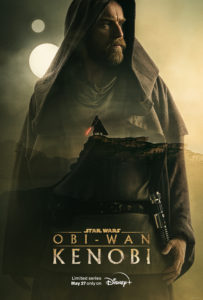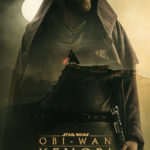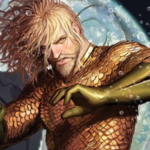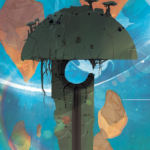
 Faster than you can say “summa-verminoth,” Obi-Wan Kenobi (2022) has already come and gone.
Faster than you can say “summa-verminoth,” Obi-Wan Kenobi (2022) has already come and gone.
After years of fan speculation and longing, Ewan McGregor has once again donned the Jedi robes and ignited the blue. Hayden Christensen has also returned to fulfill his arc from Star Wars Episode III: Revenge of the Sith (2005) and substantially portray the full-fledged Sith lord, Darth Vader.
We’ve come a long way from the early days of Disney Lucasfilm, when properties like Star Wars: The Force Awakens (2015) and Star Wars: Battlefront all but pretended the Prequel Trilogy didn’t exist.
Before the first moment of first episode, Obi-Wan Kenobi provides a recap of the entire Prequel Trilogy. For fans like me who grew up with the Prequels and have gone through the whole cycle of innocently loving, cynically despising, and then loving the prequels once more, this sequence carries a surprising weight of emotion.
The often-meandering Prequels tended to lose their emotional thread amid complicated plots and George Lucas’s self-admittedly clunky dialogue. But here, we see a single emotional thread boiled down: the brotherhood between Obi-Wan and Anakin. This focused, condensed version of the Prequels shows exactly why so many fans have returned to these films.
The recap also signals that this show, perhaps more than any other story produced by Disney Lucasfilm, flows directly from the episodic films. As many fans have already concluded: This is Star Wars Episode 3.5.
But does the show hold up against the box-office-smashing giants of cinema that surround it?
A word of warning: If read on you do, only spoilers will you find.
Perhaps the best summary of Obi-Wan Kenobi comes in the words of Han Solo: “She may not look like much, but she’s got it where it counts, kid.”
I only have one major disappoint with this series: the overall visual quality. Even the most positive Star Wars fans must admit that this show simply doesn’t live up to the visual quality expected from a Star Wars property.
For any other show, I would completely understand. But this is Star Wars. More than that, this is the most fan-anticipated Star Wars story in years. Watching it, I can sense the creators making the most of what budget they had. But ultimately, the visual effects and creature makeup look more like par-for-the-course network television than the groundbreaking, boundary-obliterating effects of The Mandalorian.
These visual failures keep the show from perfection. But they are ultimately surface-level failures. To paraphrase to my borrowed Han Solo quote: Obi-Wan Kenobi might not look like much, but it’s got it where it counts.
I found the show hard to process on first viewing. Things I imagined since childhood had suddenly appeared on screen: Young Leia learning to be a princess on Alderaan, Owen Lars telling Obi-Wan to stay away from his family, Obi-Wan finally learning that Anakin Skywalker has lived. How can you critically approach a show that’s literally bringing your childhood imagination to life?
On top of that, there’s the pure visual feast of seeing Ewan McGregor’s Ben Kenobi on screen with Original Trilogy stormtroopers and a fully-armored Darth Vader. Fans once expected the Prequel Trilogy to reach this point. But those films stopped short. Now we see the true blending of Prequel and Original.
The show’s greatest surprise: young Leia Organa. What better way to get Old Ben out of the desert than to give him a mission he can’t deny?
Young Vivien Lyra Blair impressively captures the stubborn, insightful spirit of Carrie Fisher’s grown-up character. We see all of her future strength mingled with a 10-year-old’s naïveté.
The show also displays the true pain of the Skywalker family situation. Kenobi holds a world of tragic secrets within himself. He loved Anakin like a brother. Now he’s on the run with Anakin’s daughter, and Anakin himself—now Vader—is pursuing them. But little Leia doesn’t know Vader’s identity, and Vader doesn’t know hers. Only Kenobi carries this pain. He carries it for Luke and Leia.
Obi-Wan Kenobi immediately delivers on its biggest promise. This is an introspective, character-driven take on Star Wars. George Lucas sometimes failed to find the genuine emotion in his characters. Famously, his then-wife Marcia Lucas gave the original Star Wars its emotional core in the editing booth.
This show continues that project. It finds the emotional core amid George Lucas’s raw materials. Deborah Chow brings the same depth to Obi-Wan as she brought to Din Djarin in Mandalorian. Here, we find an Obi-Wan given over to fear and failure. He begins his journey from a place of simple duty, inwardly defeated, going through the motions. He ends his journey as the hope-filled, wise old wizard we meet in A New Hope (1977).
This arc shows most clearly in Kenobi’s two confrontations with Vader. In the first, at the show’s exact middle, Kenobi runs. He’s full of fear and regret. He nearly dies at Vader’s hand.
But then he finds hope. He sees the heroism of ordinary people fighting for the light. He becomes a leader again—not a lonely desert hermit, but a general who fought in the Clone Wars.
When Kenobi finally faces Vader at the end of the series, in one of the greatest lightsaber duels ever put to film, his strength has returned. But it’s not the strength to kill Vader. It’s the strength to accept his own failures, apologize for them, let them go, and walk away.
It’s the strength of a Jedi.
The greatness of Obi-Wan Kenobi ultimately shines through its visual foibles. And perhaps those warts only serve to make it more like Star Wars. Fans have always found the things they love hidden slightly beneath the surface. We’ve spent years learning to look past the clunky dialogue of the Prequels, the over-baked CGI of the Special Editions, the aimlessness of the Sequels, and the singing droids of the animated shows. We’ll learn to look past a 41-year-old padawan Anakin and a Grand Inquisitor who looks a tad too human.
You can binge Obi-Wan Kenobi right now on Disney+.




